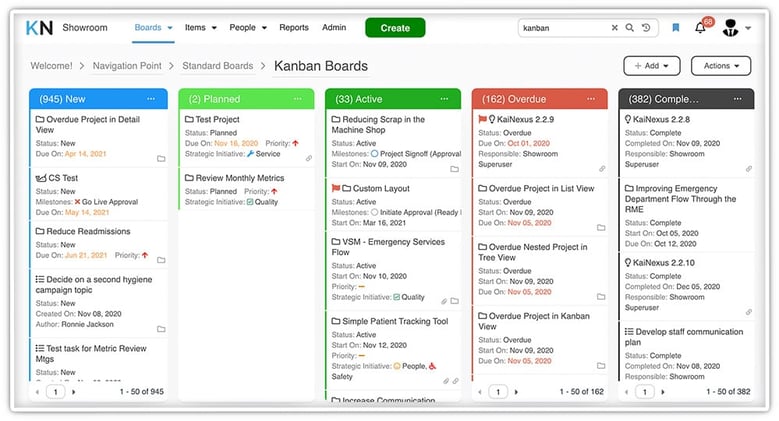 Fortunately for organizations looking to develop a culture of continuous improvement, there are lots of tried and tested quality improvement tools available. Many of them were developed within the Lean manufacturing, Six Sigma, or Total Quality Management paradigms, but you don’t have to go all-in on one of these approaches. Many companies find success using a mix of these useful tools. One thing that makes them all more effective is software designed to bring structure to improvement work.
Fortunately for organizations looking to develop a culture of continuous improvement, there are lots of tried and tested quality improvement tools available. Many of them were developed within the Lean manufacturing, Six Sigma, or Total Quality Management paradigms, but you don’t have to go all-in on one of these approaches. Many companies find success using a mix of these useful tools. One thing that makes them all more effective is software designed to bring structure to improvement work.
Here are some thoughts on how software supports nine of the most popular quality improvement tools.
Standard Work
Standard work is the documented current best practice of performing any task or process. It forms the basis for all improvement. Software is used to support Standard Work in both development and execution. The process of developing the Standard is tracked as an improvement, ensuring that all of the stakeholders, especially process operators, are involved. It also serves as a home for the current Standard. When the Standard needs revision, an improvement cycle can begin.
DMAIC and PDSA Improvement Cycles
DMAIC (Define, Measure, Analyze, Improve, Control) and PDSA (Plan, Do, Study, Act) are variations of the cycle for continuous improvement. Each is designed to ensure smart, controlled, and effective change. Regardless of which cycle the organization prefers, improvement management software is used to document each step of the cycle, alert participants when action is needed, and measure the impact of the improvement.
Huddle Meetings
Daily huddle meetings are a common practice in organizations dedicated to continuous improvement. Teams gather around a huddle board to discuss ongoing improvements and new challenges. Improvement software offers a digital version of the huddle board, making it possible for people to participate from anywhere, creating a record of the work, and helping executives stay informed about the improvement work of all the teams they oversee.
Gemba Walks
During a Gemba walk, a leader visits the place where work is actually done to observe, show respect, and potentially suggest opportunities for improvement after a period of reflection. Quality improvement software creates a home for these opportunities so that they can be recorded, evaluated, and implemented. All of the notes, images, and data gathered during the walk are stored for quick access when the improvement cycle begins.
Kanban
Kanban is a technique used designed to help visualize the flow of work and find any interruptions and make any interruptions or backlog immediately evident. Digital Kanban highlight problems with flow and help managers respond proactively.

Value Stream Mapping
Value stream mapping involves creating a flow chart of the current state of a process to identify opportunities for waste to be eliminated and value maximized. Software can be used to digitize the map, but the most significant advantages are realized when software is used to manage the improvements identified in the mapping process.
Hoshin Kanri
Hoshin Kanri is a strategy deployment method that involves identifying a few breakthrough objectives that can be achieved in 3-5 years. Software supports Hoshin planning by aligning each individual’s goals with the overall strategy in the tool that they use for daily improvement work. This brings the strategy to life and helps people make decisions that move the organization ever closer to the game-changing milestones.
Catchball
The Catchball improvement technique involves moving ideas and information from one person or team to others. The idea is much like the childhood game of catch but with opportunities for improvement, rather than balls. Catchball can be used for making complex decisions and for strategy development. Software that creates a record of the ideas as they move back and forth is far superior to email for this kind of collaboration. There is one place to go for all relevant information and workflow tools to make sure that no “balls” are dropped.
Rapid Improvement Events
Rapid improvement events, also known as Kaizen events, are a quality improvement tool designed to get quick results by placing intense focus on a problem for a short time. Software provides a unified platform for storing information, alerting team members about important milestones, and tracking progress in real-time. If the team finds opportunities for improvement that are outside the scope of the event, they can easily be stored for future action.
These quality improvement tools have been around longer than there’s been software purpose-built to support them, but why not give your team every advantage when it comes to improvement? If you’d like to know more about how our clients have been astonished by the results, drop us a line.





Add a Comment